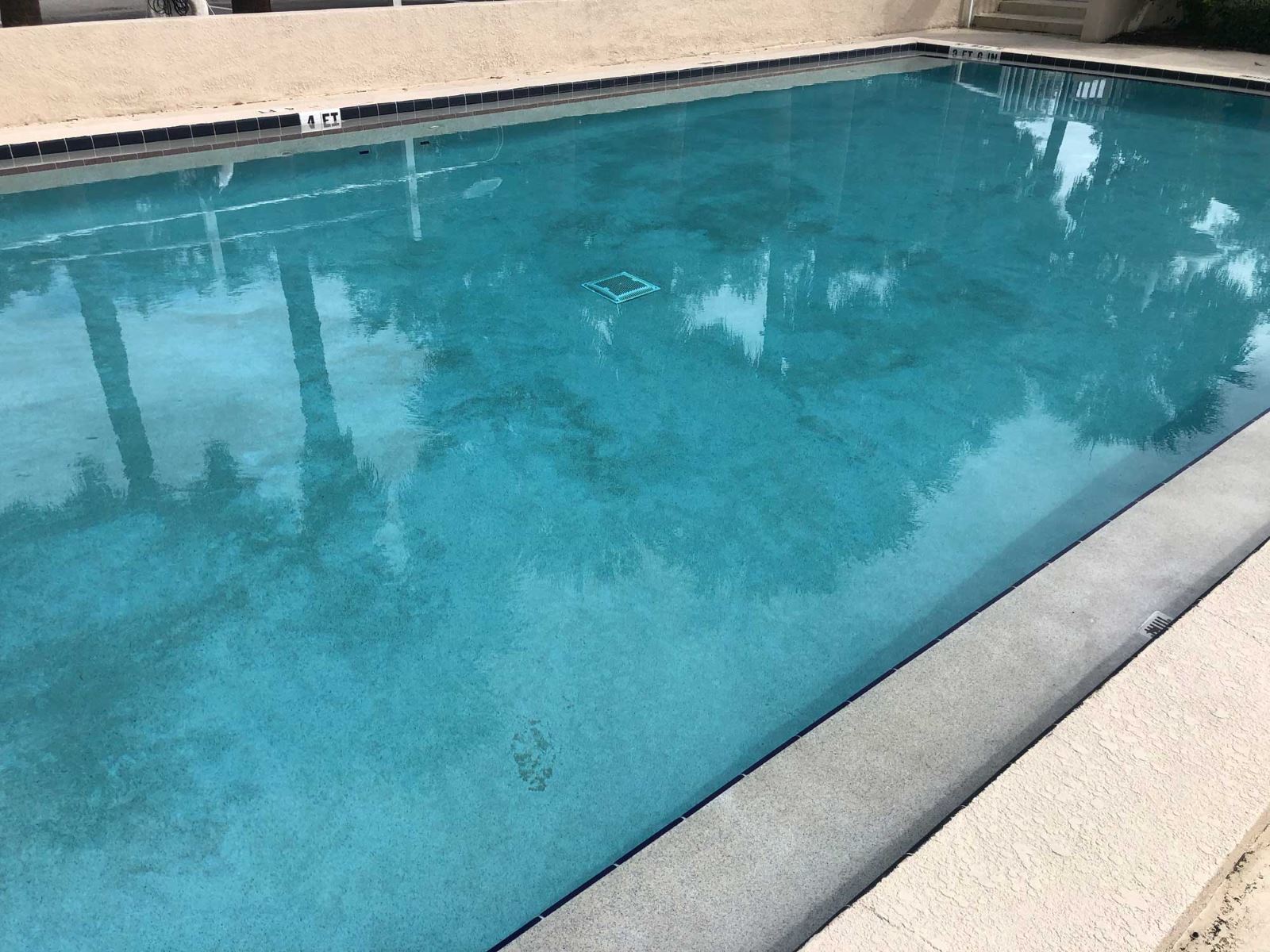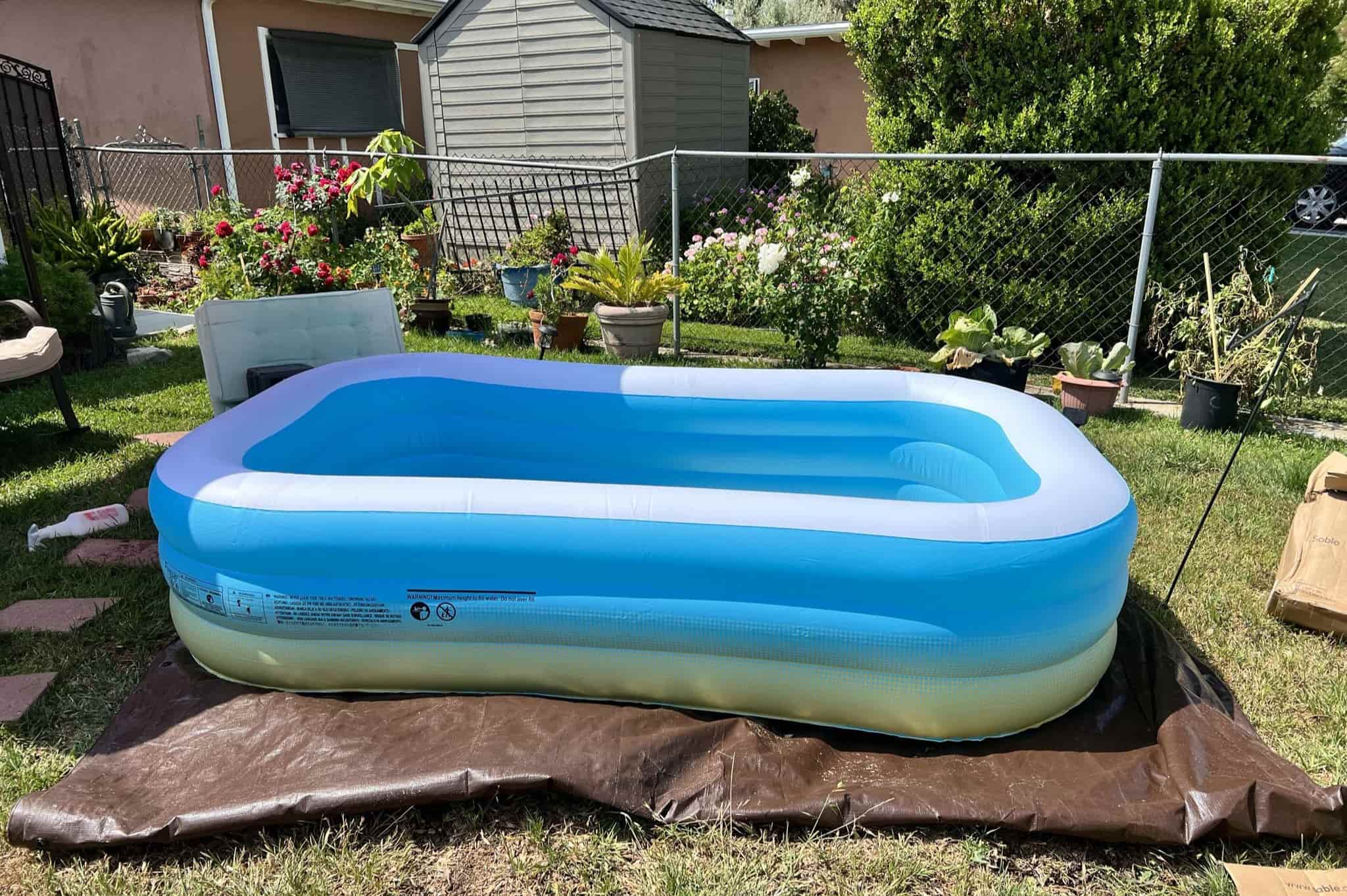Home>Gardening & Outdoor>Outdoor Recreation & Activities>How To Remove A Swimming Pool


Outdoor Recreation & Activities
How To Remove A Swimming Pool
Published: February 18, 2024
Learn how to safely and effectively remove a swimming pool to reclaim your outdoor space and explore new recreational activities. Our expert guide covers the process step by step.
(Many of the links in this article redirect to a specific reviewed product. Your purchase of these products through affiliate links helps to generate commission for Storables.com, at no extra cost. Learn more)
Introduction
Removing a swimming pool is a significant undertaking that requires careful planning, proper execution, and adherence to local regulations. Whether you're looking to reclaim space in your backyard, eliminate the maintenance costs, or address safety concerns, the process of pool removal involves several essential steps. From obtaining the necessary permits to restoring the area post-removal, each phase demands attention to detail and a commitment to environmental responsibility.
While the idea of removing a swimming pool may seem daunting, it can also be an opportunity for transformation. By understanding the steps involved and enlisting the right professionals, you can navigate this process with confidence and achieve a successful outcome. Whether you're considering a full removal or partial demolition, this guide will provide you with the essential insights and actionable steps to facilitate a smooth and efficient pool removal project.
As you embark on this journey, it's crucial to recognize the environmental impact of pool removal. Proper disposal of pool materials, such as concrete, steel, and other components, is essential for minimizing ecological harm. Additionally, the restoration of the area post-removal plays a vital role in ensuring that the landscape is not only aesthetically pleasing but also sustainable.
In the following sections, we will delve into the step-by-step process of removing a swimming pool, from obtaining the necessary permits to the final restoration of the area. Each phase of the pool removal process presents unique challenges and considerations, and by understanding these intricacies, you can approach the project with clarity and purpose.
By following this comprehensive guide, you will gain valuable insights into the pool removal process, empowering you to make informed decisions and take the necessary steps to achieve a successful and seamless removal of your swimming pool. Let's embark on this journey together, as we explore the essential steps and considerations for removing a swimming pool and reclaiming your outdoor space.
Key Takeaways:
- Reclaiming outdoor space by removing a swimming pool involves obtaining permits, draining the pool, demolishing the structure, filling the hole, and restoring the area. It’s a transformative journey towards a sustainable and vibrant landscape.
- Removing a swimming pool requires careful planning, adherence to regulations, and environmental responsibility. From draining the pool to restoring the area, each step contributes to reclaiming outdoor space and creating a harmonious environment.
Read more: How To Remove Iron From Swimming Pool Water
Step 1: Obtain necessary permits
Before commencing any physical work on the removal of a swimming pool, it is crucial to obtain the required permits from the local authorities. The regulations regarding pool removal permits vary by location, and it is essential to comply with these legal requirements to avoid potential fines and complications.
The first step in this process is to research the specific permit requirements in your area. Contact the local building or planning department to inquire about the necessary permits for pool removal. In some regions, you may need a demolition permit, while others may require an excavation permit for pool removal projects. Understanding the precise permit requirements will ensure that you are in full compliance with local regulations.
Once you have identified the permit requirements, you will need to submit an application to the relevant authorities. The application process typically involves providing details about the scope of the pool removal project, including the size of the pool, the intended method of removal, and the restoration plans for the area. It is important to be thorough and accurate in your application to expedite the permit approval process.
After submitting the permit application, there may be a waiting period while the authorities review the proposed pool removal project. During this time, it is advisable to stay in communication with the permitting office to address any additional information or documentation they may require. Maintaining open and transparent communication can help facilitate the permit approval process and ensure that all regulatory requirements are met.
Upon receiving the necessary permits, it is essential to review the conditions and restrictions outlined in the approval. Some permits may stipulate specific guidelines for the pool removal process, such as environmental considerations, waste disposal requirements, and safety protocols. Adhering to these conditions is vital to ensure compliance and mitigate any potential issues during the pool removal project.
By obtaining the required permits and adhering to the regulatory guidelines, you can proceed with the pool removal process with confidence, knowing that you have fulfilled all legal obligations. This proactive approach not only ensures compliance with local regulations but also sets the stage for a smooth and efficient pool removal project, laying the groundwork for the subsequent phases of the removal process.
Step 2: Drain the pool
Draining the pool is a critical step in the pool removal process, and it involves the safe and efficient removal of water from the pool structure. Proper drainage is essential to prepare the pool for the subsequent demolition and removal phases. Here's a detailed look at the essential considerations and steps involved in draining the pool:
1. Assess the Water Disposal Options
Before initiating the drainage process, it is important to consider the disposal options for the pool water. Depending on the volume of water and local regulations, you may need to explore various disposal methods. In some cases, the pool water can be drained into the sewer system, while in others, it may need to be redirected to a suitable drainage area on the property. Understanding the disposal options and any associated regulations is crucial for ensuring compliance and environmental responsibility.
2. Plan the Drainage Process
Once the disposal options are determined, the next step is to plan the drainage process. This involves identifying the most effective drainage points in the pool and establishing a clear path for the water to exit the structure. Proper planning helps prevent water accumulation in the pool area and facilitates a smooth and controlled drainage process.
3. Initiate the Drainage
With the drainage plan in place, the pool can be gradually emptied using pumps or gravity drainage, depending on the pool's design and accessibility. It is important to monitor the drainage process closely to ensure that the water is being directed to the designated disposal area without causing any flooding or environmental impact.
4. Monitor Water Levels
As the pool is being drained, it is essential to monitor the water levels regularly to gauge the progress of the drainage process. Adjustments may be necessary to optimize the drainage flow and address any potential issues that may arise during the process.
5. Ensure Safety Measures
Throughout the drainage process, safety measures should be prioritized to prevent accidents and ensure the well-being of individuals involved in the project. This includes securing the area around the drainage points, using appropriate safety equipment, and adhering to established safety protocols.
6. Verify Complete Drainage
Once the drainage process is complete, it is important to verify that the pool has been emptied entirely. Any remaining water should be removed to prepare the pool for the subsequent demolition phase.
By meticulously executing the drainage process, you can set the stage for the next phase of the pool removal project, ensuring that the pool is ready for the demolition and removal of its structure. This meticulous approach lays the foundation for a successful and efficient pool removal process, bringing you one step closer to reclaiming your outdoor space.
Step 3: Demolish the pool structure
Demolishing the pool structure is a pivotal phase in the pool removal process, marking the transition from preparation to physical removal. This phase involves the systematic dismantling and disposal of the pool's physical components, including the concrete, steel, and other materials that form the pool structure. Here's an in-depth exploration of the essential steps and considerations involved in demolishing the pool structure:
-
Safety Preparations: Before initiating the demolition, it is crucial to prioritize safety preparations. This includes securing the work area, implementing safety barriers, and providing personal protective equipment for the individuals involved in the demolition process. Safety protocols should be strictly adhered to throughout the demolition phase to mitigate potential hazards and ensure the well-being of the workers and surrounding environment.
-
Select Demolition Method: The choice of demolition method depends on various factors, including the pool's construction, accessibility, and surrounding landscape. Common methods of pool demolition include mechanical demolition, which involves the use of heavy machinery to break up the pool structure, and manual demolition, which entails the use of handheld tools to dismantle the pool. The selection of the most suitable method is essential for optimizing efficiency and minimizing disruption to the surrounding area.
-
Dismantling Process: The dismantling process involves the systematic removal of the pool's components, starting with the breaking up of the pool's walls and floor. For concrete pools, specialized equipment such as jackhammers and excavators may be employed to facilitate the demolition process. Careful attention is given to the controlled removal of the pool structure to prevent damage to the surrounding landscape and minimize the generation of debris.
-
Waste Management: As the pool structure is being demolished, the generated waste materials, including concrete, steel rebar, and other debris, must be managed responsibly. Sorting and segregating the demolition waste for recycling and proper disposal is essential for minimizing environmental impact and promoting sustainability. Working with waste management professionals can ensure that the demolition waste is handled in accordance with environmental regulations.
-
Environmental Considerations: Throughout the demolition process, environmental considerations play a crucial role in mitigating the impact on the surrounding ecosystem. Measures such as dust control, erosion prevention, and sediment containment are implemented to safeguard the environment during the demolition phase. Additionally, the proper disposal of demolition waste is essential for preventing soil and water contamination.
-
Post-Demolition Assessment: Once the pool structure has been successfully demolished, a thorough assessment of the site is conducted to ensure that all remnants of the pool have been removed, and the area is prepared for the subsequent restoration phase. Any remaining debris or potential hazards are addressed to facilitate a smooth transition to the restoration process.
By meticulously executing the demolition of the pool structure, you can progress towards the final phases of the pool removal project, bringing you closer to reclaiming your outdoor space and transforming the landscape. This phase sets the stage for the subsequent steps in the pool removal process, marking a significant milestone in the journey towards a revitalized outdoor environment.
Step 4: Fill the hole
Filling the void left by the removed swimming pool is a crucial step in the pool removal process, as it sets the foundation for the restoration of the area and the transformation of the landscape. The process of filling the hole involves strategic planning, precise execution, and a commitment to environmental responsibility. Here's an in-depth exploration of the essential considerations and steps involved in filling the hole left by the removed swimming pool:
-
Assess the Fill Material: Before commencing the filling process, it is essential to assess the appropriate fill material to use. Common fill materials include clean fill dirt, gravel, and sand. The selection of the fill material depends on factors such as the soil composition, drainage requirements, and the intended future use of the area. Understanding the characteristics of the fill material is crucial for ensuring the stability and longevity of the filled area.
-
Compaction and Grading: Once the fill material is determined, the next step is to focus on compaction and grading. Proper compaction of the fill material is essential for achieving a stable and level surface. This process may involve the use of compaction equipment to ensure that the fill material is densely packed and free from voids. Additionally, grading the filled area to align with the surrounding landscape is important for creating a seamless transition and optimizing the aesthetics of the restored space.
-
Drainage Considerations: Addressing drainage considerations during the filling process is vital for preventing water accumulation and promoting the long-term stability of the filled area. Proper grading and the incorporation of drainage features, such as swales or French drains, can help manage surface water and mitigate potential erosion issues. By integrating effective drainage solutions, the filled area can withstand varying weather conditions and maintain its integrity over time.
-
Environmental Impact: Throughout the filling process, environmental impact considerations play a significant role in promoting sustainability and ecological responsibility. Utilizing clean fill material free from contaminants, adhering to erosion control measures, and minimizing soil disturbance are essential for mitigating the environmental impact of the filling process. By prioritizing environmental stewardship, the restoration of the area post-pool removal contributes to the preservation of the natural ecosystem.
-
Verification and Quality Assurance: Upon completing the filling process, a thorough verification and quality assurance assessment are conducted to ensure that the filled area meets the required standards. This involves inspecting the compaction, grading, and overall stability of the filled site. Any necessary adjustments or additional measures are implemented to address any potential issues and ensure the long-term integrity of the restored area.
By meticulously executing the filling of the pool void, you can lay the groundwork for the final phase of the pool removal project, bringing you closer to the complete transformation of the outdoor space. This phase marks a significant milestone in the journey towards reclaiming and revitalizing the landscape, setting the stage for the subsequent restoration and enhancement of the area.
Step 5: Restore the area
Restoring the area following the removal of a swimming pool is a transformative phase that marks the culmination of the pool removal project. This pivotal step involves revitalizing the landscape, enhancing the aesthetics, and ensuring the long-term sustainability of the reclaimed outdoor space. Here's an in-depth exploration of the essential considerations and steps involved in restoring the area post-pool removal:
-
Landscaping and Vegetation: The restoration process begins with landscaping and vegetation enhancements. This may involve the installation of new grass, plants, trees, and shrubs to create a lush and vibrant environment. Careful consideration is given to the selection of native and adaptive species that thrive in the local climate, promoting biodiversity and ecological balance.
-
Hardscape Integration: Integrating hardscape elements such as pathways, patios, and retaining walls can enhance the functionality and visual appeal of the restored area. Thoughtful hardscape design complements the natural landscape, providing functional outdoor spaces for relaxation, entertainment, and recreation.
-
Water Features and Irrigation: The addition of water features, such as ponds or fountains, can introduce a sense of tranquility and visual interest to the restored area. Additionally, implementing efficient irrigation systems ensures the proper hydration of the landscape, promoting the healthy growth of vegetation and minimizing water wastage.
-
Sustainable Design Practices: Embracing sustainable design practices, such as xeriscaping and rainwater harvesting, contributes to the ecological resilience of the restored area. By prioritizing water conservation, soil health, and energy efficiency, the landscape becomes a model of environmental stewardship and sustainable living.
-
Outdoor Amenities: Incorporating outdoor amenities, such as seating areas, fire pits, and recreational spaces, enhances the usability and enjoyment of the restored landscape. Thoughtful placement of amenities encourages outdoor engagement and fosters a sense of community and connection with the natural surroundings.
-
Maintenance and Care: Establishing a comprehensive maintenance plan is essential for preserving the beauty and functionality of the restored area. This includes regular lawn care, pruning, irrigation system maintenance, and periodic inspections to address any emerging landscape needs.
By meticulously executing the restoration of the area post-pool removal, you can achieve a harmonious and sustainable outdoor environment that enriches the quality of life and fosters a deep connection with nature. This phase represents the culmination of the pool removal project, marking the beginning of a new chapter for the outdoor space, where beauty, functionality, and environmental responsibility converge to create a truly remarkable landscape.
Frequently Asked Questions about How To Remove A Swimming Pool
Was this page helpful?
At Storables.com, we guarantee accurate and reliable information. Our content, validated by Expert Board Contributors, is crafted following stringent Editorial Policies. We're committed to providing you with well-researched, expert-backed insights for all your informational needs.














0 thoughts on “How To Remove A Swimming Pool”